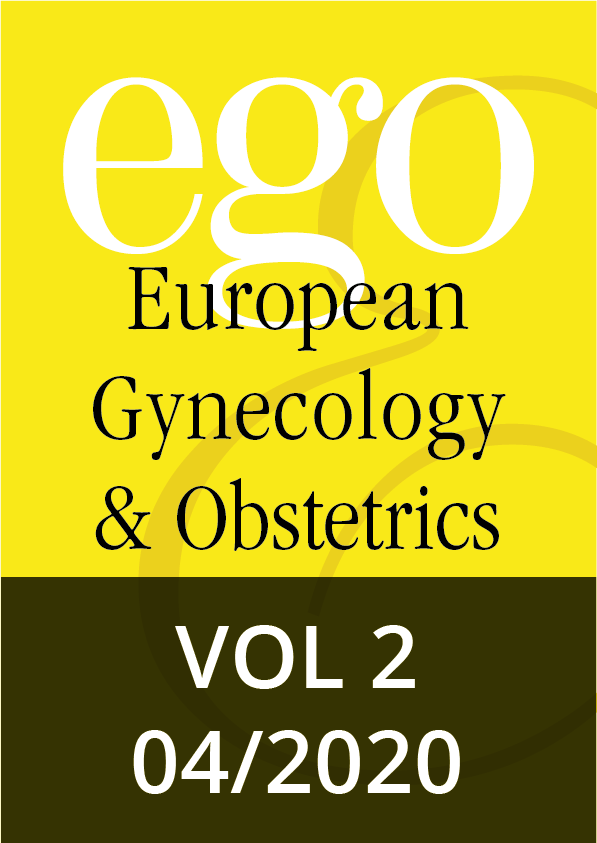Position paper, 198–204 | DOI: 10.53260/EGO.202041
Reviews, 205–209 | DOI: 10.53260/EGO.202042
Case reports, 210–213 | DOI: 10.53260/EGO.202043
Case reports, 214–217 | DOI: 10.53260/EGO.202044
Original articles, 218–222 | DOI: 10.53260/EGO.202045
Original articles, 223–233 | DOI: 10.53260/EGO.202046
Original articles, 234–238 | DOI: 10.53260/EGO.202047
Original articles, 239–245 | DOI: 10.53260/EGO.202048
Original articles, 246–248 | DOI: 10.53260/EGO.202049
Original articles, 249–254 | DOI: 10.53260/EGO.2020410
Original articles, 255–261 | DOI: 10.53260/EGO.2020411
Incidence of human papillomavirus and other sexually transmitted agents in Brazilian women with cervical atypia from a public health care service of Pernambuco, Brazil
Abstract
Aim: This study was conducted to assess the correlation between infection with high-risk genotypes of human papillomavirus (HPV) and with various types of microflora, in particular Chlamydia trachomatis (CT), in patients with different stages of cervical damage recruited from the public health care service in the State of Pernambuco, Brazil.
Methods: A population-based cross-sectional study was initially conducted in 525 women aged 18 to 64 years. Among these women, 87 were diagnosed with cytopathological changes of different degrees based on analysis of Pap smear samples at the Central Public Health Laboratory of Pernambuco (LACEN), during the period from April to November 2011. All of these women underwent routine colposcopy. The presence of HPV and CT was verified by means of polymerase chain reaction. To assess whether the presence of these and other genital infections were associated with cervical intraepithelial changes, Fisher’s exact test was used.
Results: Of the 87 women diagnosed with cytopathological changes in this study, 73 (83.9%) were positive for CT infection and 72 (82.8%) for HPV infection, with co-infections detected in 65 cases (90.3%). Of the patients who had HPV infection, 93.1% had colposcopic changes and 68.96% had histopathological agreement. There was a statistically significant association between HPV-CT co-infection and the presence of cervical tissue damage (p=0.037). The most prevalent HPV genotypes were types 16 and 31 in low-risk cervical injuries; while for the high-risk injuries, the most common genotypes were 16, 31, 33 and 18. Other micro-floras found were Gardnerella vaginalis (GV) in 31 (35.6%) cases, Coccus sp in 17 (19.5%), Candida sp in 8 (9.2%), Trichomonas vaginalis in 5 (5.7%), Lactobacillus sp in 4 (4.6%), and herpes simplex virus in 1 (1.2%). However, no correlations were found between the presence of these microorganisms and the type of cervical lesion.
Conclusions: Genital infections, in particular CT infections, need to be investigated and dealt with appropriately, given that co-infections with HPV are associated with an increased likelihood of low-grade lesions, which can develop into more serious lesions, such as cervical carcinomas.
Keywords: cervical lesion, genital co-infections., HPV infection
Citation: Oliveira Lobo Pereira da Costa M.,Oliveira Lobo Pereira da Costa G.,Henrique Rodrigues Pontes P.,Tereza dos Santos Correia M.,Roberto Eleutério de Souza P., Incidence of human papillomavirus and other sexually transmitted agents in Brazilian women with cervical atypia from a public health care service of Pernambuco, Brazil, EGO European Gynecology and Obstetrics (2020); 2020/04:234–238 doi: 10.53260/EGO.202047
Published: October 1, 2020
ISSUE 2020/04

Position paper, 198–204 | DOI: 10.53260/EGO.202041
Reviews, 205–209 | DOI: 10.53260/EGO.202042
Case reports, 210–213 | DOI: 10.53260/EGO.202043
Case reports, 214–217 | DOI: 10.53260/EGO.202044
Original articles, 218–222 | DOI: 10.53260/EGO.202045
Original articles, 223–233 | DOI: 10.53260/EGO.202046
Original articles, 234–238 | DOI: 10.53260/EGO.202047
Original articles, 239–245 | DOI: 10.53260/EGO.202048
Original articles, 246–248 | DOI: 10.53260/EGO.202049
Original articles, 249–254 | DOI: 10.53260/EGO.2020410
Original articles, 255–261 | DOI: 10.53260/EGO.2020411
